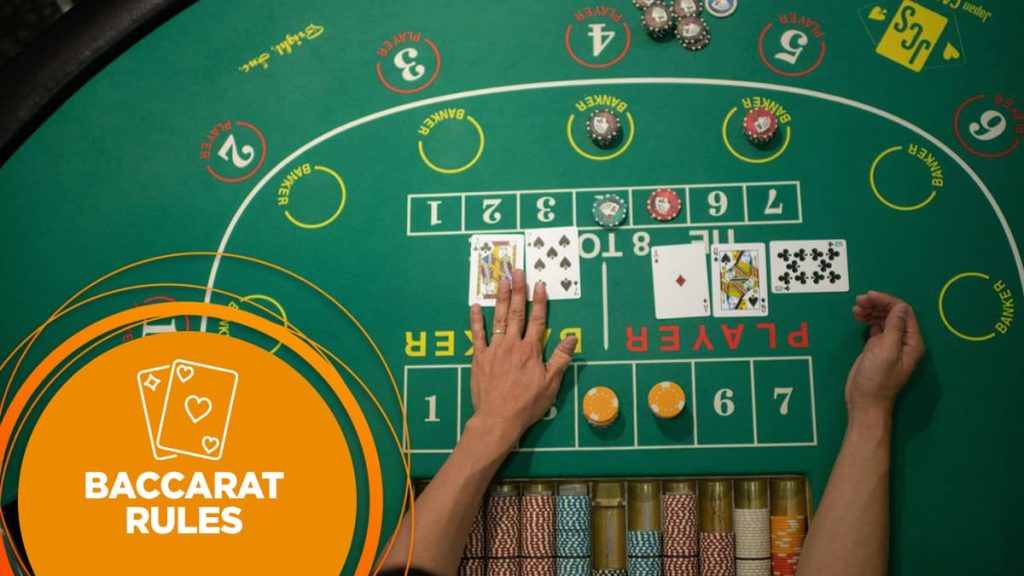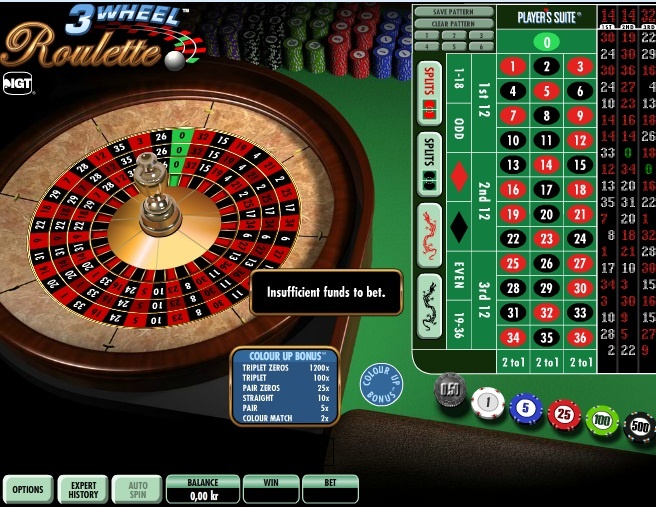Table games have long been a staple of the gambling experience, providing both excitement and strategic depth. Among these, Blackjack, Roulette, and Baccarat stand out not only for their popularity but also for the unique mathematical principles and randomness that govern them. Each game offers a distinct atmosphere and a varied approach to gameplay, making them appealing to a wide range of players. In this article, we will delve into the technical frameworks of these three iconic table games, examining the intricacies of their rules, the odds involved, and their respective payout structures. Whether you are a seasoned gambler or an inquisitive newcomer, understanding the technical side of these games can enhance your playing experience and inform your strategies.
Blackjack, often referred to as twenty-one, is renowned for its blend of luck and skill. The objective is straightforward: to beat the dealer by having a hand value that is closer to 21 without exceeding it. The game’s appeal lies in its strategic elements, where players can use various techniques like card counting to improve their odds.
Roulette, on the other hand, is a game of chance that offers an exhilarating experience driven by the spinning wheel and the bouncing ball. Players place bets on where they believe the ball will land, with a myriad of betting options available, ranging from single numbers to broader categories like colors and odd/even.
Baccarat, often associated with high stakes and glamour, is a comparing card game that pits the player against the banker. With its relatively simple rules and fast-paced gameplay, Baccarat continues to attract those looking for both excitement and the potential for significant wins.
In exploring these three table games, we will uncover the fundamental rules and objectives, analyze the odds and payout structures, and guide beginner players toward the most suitable choice for their first foray into the world of table gaming.
Basic Rules and Goals of Each Game
Table games such as blackjack, roulette, and baccarat each have unique rules and objectives, catering to different styles of play. Below, we break down the fundamental aspects of these classic casino staples.
Blackjack
The objective of blackjack, or 21 as it’s sometimes called, is to beat the dealer’s hand without exceeding a total of 21. Players are dealt two cards, and they can choose to ‘hit’ (take an additional card) or ‘stand’ (keep their current hand). The game features the following basic rules:
- Card Values: Number cards (2-10) are worth their face value, while face cards (Jack, Queen, King) are valued at 10, and Aces can be worth either 1 or 11, depending on the hand.
- Winning Conditions: A player wins by having a higher total than the dealer without exceeding 21. Alternatively, if the dealer busts (exceeds 21), all remaining players win.
- Blackjack: A player who is dealt an Ace and a 10-value card as their initial hand has a “blackjack” and typically wins 1.5 times their bet unless the dealer also has a blackjack.
Roulette
Roulette is a game of chance that involves a spinning wheel, a small ball, and a betting table. Players can place bets on individual numbers, ranges of numbers, or colors. The core rules include:
- Betting Options: Players can choose from numerous betting options, including inside bets (specific numbers) and outside bets (colors, odd/even, or ranges).
- Winning Condition: When the wheel stops spinning, the ball lands on a number, and winning bets are paid out based on the probabilities associated with the selected bets.
- Zero and Double Zero: European roulette features a single zero, while American roulette includes both a single zero and a double zero, impacting the house edge.
Baccarat
Baccarat is a comparing card game played between two hands: the ‘Player’ and the ‘Banker.’ The goal is to bet on which hand will have a total value closest to 9. The game operates under these basic rules:
- Card Values: Cards 2-9 are worth their face value, 10s and face cards are worth 0, and Aces are worth 1. Only the last digit of the total matters when calculating scores.
- Winning Bets: Players can bet on the ‘Player,’ ‘Banker,’ or a ‘Tie.’ The Banker bet has a slight advantage due to its lower house edge.
- Third Card Rule: Depending on the total scores of the Player and Banker, a third card may be drawn, following specific house rules that govern this mechanic.
Understanding these fundamental rules and objectives will enable players to engage more effectively with blackjack, roulette, and baccarat, laying the groundwork for more advanced strategies and insights.

Odds and Payouts Explained
Understanding the odds and payouts of tabletop games such as Blackjack, Roulette, and Baccarat is paramount for any seasoned gambler aiming to optimize their betting strategy. Each game presents unique probabilities and payout structures that can significantly impact your overall gaming experience and potential profitability.
Blackjack
In Blackjack, players are competing against the dealer with the primary goal of achieving a hand value as close to 21 as possible without exceeding it. The game employs a standard deck of 52 cards, and the probabilities are rooted in the card values:
- Number cards (2-10) are worth their face value.
- Face cards (Kings, Queens, Jacks) and Tens are worth 10.
- Aces can either be 1 or 11, depending on which value benefits the hand more.
The house edge in Blackjack typically hovers around 0.5% to 1%, depending on the rules of the house and the player’s strategy. Payouts for winning hands generally follow these structures:
- Standard win: 1:1
- Blackjack (an Ace and a 10-value card): 3:2
- Surrendered bet: Loss of half the bet amount
Roulette
Roulette is governed by a spinning wheel segmented into pockets, with each pocket marked by a number and a color (red or black), alongside the green ‘0’ or ’00’ in American Roulette. The odds in Roulette vary significantly depending on the type of bet placed:
- Inside Bets: Betting on specific numbers or small groupings. Common payouts include:
- Straight Up (single number): 35:1
- Split (two numbers): 17:1
- Street (three numbers): 11:1
- Corner (four numbers): 8:1
- Outside Bets: Betting on larger categories, such as red/black or odd/even. Common payouts include:
- Red or Black: 1:1
- Odd or Even: 1:1
- Low (1-18) or High (19-36): 1:1
The house edge is generally around 5.26% for American Roulette and 2.7% for European Roulette, primarily due to the presence of the double zero in the former.
Baccarat
Baccarat, often associated with high stakes, is relatively simple in its gameplay and payout structure. The game features three possible outcomes: Player win, Banker win, or Tie. The odds of winning can predictably be tabulated based on the type of wager:
- The Player bet typically has a house edge of approximately 1.24%, with a payout of:
- Player win: 1:1
- The Banker bet, which is statistically favored due to the rules of drawing cards, comes with a slightly higher house edge of around 1.06%, yielding:
- Banker win: 1:1 (but a 5% commission is often taken)
- The Tie bet possesses a significantly higher house edge at approximately 14.36%, despite its appealing payout:
- Tie: 8:1 or 9:1, depending on the casino.
In summary, a thorough understanding of odds and payout structures in Blackjack, Roulette, and Baccarat is essential for constructing a mathematically sound betting strategy and maximizing your potential returns. Make sure to factor in the house edge, as it is a crucial element that dictates your long-term expectations in these games.
Best One to Start With as a Beginner
When venturing into the realm of table games, it’s crucial to choose the one that offers the most accessible entry point for novice players. Among the trio of Blackjack, Roulette, and Baccarat, each presents unique appeal and analytical considerations. However, one game stands out as particularly beginner-friendly and strategically approachable.
Blackjack is often regarded as the ideal starting point for several reasons:
- Simple Rules: The rules of Blackjack are straightforward and intuitive. The objective is to achieve a hand value closer to 21 than the dealer’s hand without exceeding it, which allows new players to grasp the fundamentals relatively quickly.
- Control Over Decisions: Unlike Roulette and Baccarat, wherein outcomes are predominantly luck-based, Blackjack affords players the ability to make strategic decisions based on their hand and the dealer’s visible card. This interactivity fosters a deeper understanding of probability and risk management.
- Low House Edge: With optimal strategy, the house edge in Blackjack can be reduced to around 0.5%. For beginners, this means that employing basic strategies such as knowing when to hit, stand, double down, or split can significantly enhance the chances of prevailing over the house.
- Availability of Resources: Given its popularity, numerous resources—tutorials, strategy guides, and simulations—are available to help beginners master the game. Players can practice their skills in free versions online before engaging in real-money games.
While Roulette presents a captivating experience with its wheel of fortune and Baccarat boasts glamorous associations, these games typically rely more heavily on chance and less on the player’s skill or decision-making ability. Thus, beginners may find it frustrating without a solid understanding of game mechanics and betting strategies.
In summary, Blackjack emerges as the most advantageous choice for new players, providing not only an engaging and interactive platform but also opportunities for skill development that can enhance their overall gambling experience. By starting with Blackjack, beginners can build a solid foundation in table game strategy that can later be applied to more complex games like Roulette and Baccarat.

